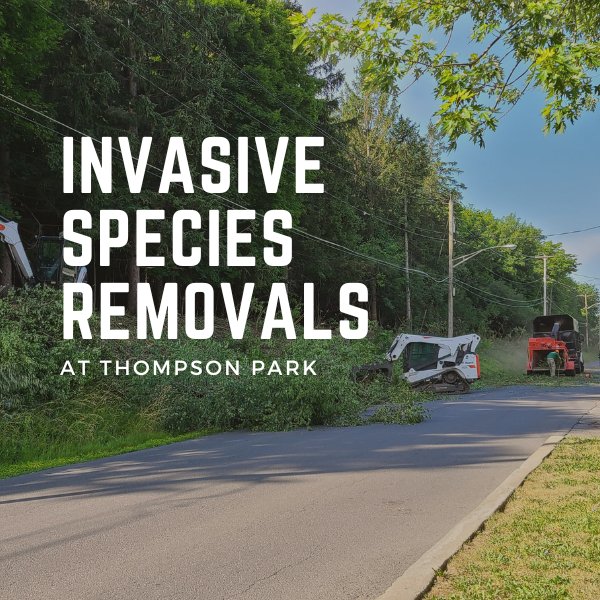This article was featured in the 2022 summer newsletter by Kenneth Mix-City of Watertown Manager.
John C. Thompson Park contains 355 acres in the southeast corner of Watertown, NY. In 1899 its namesake hired Olmsted Brothers, Landscape Architects to design a 500-acre park. Thompson paid for the construction and maintenance of the park until he gave 191 acres to the City in 1917. The rest of the Park was never completed. Later land purchases brought it to its current size. Portions of the Park are leased to the Watertown Golf Club and Zoo New York, leaving 264 acres under the City’s management.
The Park has a substantial invasive species problem that impacts most of it, except the mowed lawns. The primary problem species is Buckthorn; followed by Honeysuckle, Oriental Bittersweet, and Garlic Mustard.
Many areas of the park have become unusable because of the dense thickets of Buckthorn, except for narrow trails cut through them. Much of the land was pasture before the park and it was to continue to be open lawns in the Olmsted plan, but with limited staffing for much of its history, many areas were not mowed, making ideal conditions for Buckthorn to thrive.
An effort to remove Buckthorn was started in the Spring of 2021. Friends of Thompson Park have been using their monthly volunteer days to liberate the trees in some of the wooded areas from the Buckthorn infestation. City crews precut the brush and the volunteers drag it to piles along the road where it is chipped the following week.
This immediately created a very noticeable aesthetic difference, and these areas are now available for human activity.
City crews have also been clearing areas with a mulching head on an excavator. GYMO donated the services of a contractor last year to work half a day with mulching head on a skid steer. The City is now using some of its American Rescue Plan Act funds to continue the effort. A $37,000 contract was awarded in June to clear 12 acres. We expect to award additional contracts.
The work done so far is a small fraction of what needs to be done. Preventing the Buckthorn from re-sprouting will also be a continuous challenge.


